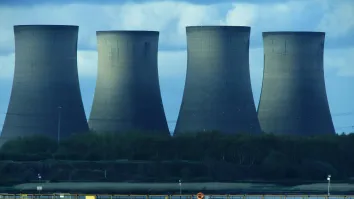
India takes on renewable energy development
By Ashutosh PandeyFueled by rapid economic growth, a growing population with greater access to goods and services and higher electrification rates, Indian energy demand is projected to rise at over 5% a year over the next 25 years, based upon expectations of 8-10% growth in GDP#.
Demand consistently outstrips production with a peak energy shortage of 12.7% in 2009-10# and India recently became the third largest carbon emitter after China and the US. Driven by concerns about climate change and energy security, the government has introduced Renewable Purchase Obligations (RPOs) as a means of increasing renewable energy (RE) capacity.
The Ministry of New and Renewable Energy (MNRE) estimates the share of renewable based capacity at 10.7%# (excluding large hydro) of the total installed capacity (MW) currently and contributes about 4% of the total electricity generation (MWhr) and the National Action Plan for Climate Change (NAPCC) sets a target for the latter to increase to 15% by 2020.
Renewable energy projects currently benefit from several initiatives designed to stimulate development including accelerated depreciation benefits, feed-in tariffs, a ten-year tax holiday, a generation-based incentive and capital subsidies, in addition to international schemes such as the Clean Development Mechanism.
However, these have not had much impact on achieving grid parity although there are high hopes surrounding RPOs.
Under this scheme, each state sets state-level targets for RE purchase by “Obligated Entities” - typically, discoms, consumers with captive plants and entities who purchase through open access. Obligations are set for the fiscal year although the regulatory authority is considering changing this to quarterly.
The national target is set at 5% for 2010 with a 1% annual increase till it reaches 15% in 2020; within this, 0.25% is solar-specific, and is slated to increase to 3% by 2022. State targets may vary. Obligations can be met by directly purchasing RE, generating RE themselves or by the purchase of Renewable Energy Certificates (RECs).
As states have varying RE resources, the Central Electricity Regulatory Commission (CERC) has introduced a market-based instrument in the form of RECs to help these entities meet their obligations. Similar to existing schemes in the US and Australia, RECs are tradable certificates that correspond to the environmental attributes associated with 1 kWhr of renewable energy, as outlined in a 2010 CERC regulation.
RECs are designed to trade within a price band, currently set at INR 1.5-3.9/unit for non-solar and INR 12-17/unit for solar. From April 2012, these will adjust to INR 1.5-3.3/unit for non-solar and INR 9.3-13.4/unit for solar (valid through the fiscal year 2016-17)A grid-connected RE generator who is not availing benefits such as feed-in-tariffs or preferential transmission, wheeling charges , waiver of electricity duty and banking facility benefit is eligible to avail RECs.
For investors and project developers, these can have a significant impact on project returns – boosting equity returns by 7-15% when including revenue from REC sales.
REC trading commenced in March 2011 and trading of non-solar RECs has gotten off to a robust start. Trading on two exchanges, the Indian Energy Exchange (IEX) and Power Exchange India Limited (PXIL), REC trading is held once a month. Over 600,000 RECs have been traded thus far, at a weighted average price of INR 2.71/unit.
Demand has outstripped supply, with buy bids at over 2X sell bids in the last trading session. States such as Maharashtra, Gujarat and Tamil Nadu have so far seen the bulk of projects that have been accredited and registered. Solar RECs are yet to trade.
As with any new scheme, there are still elements that remain unclear – in particular, there is a lack of clarity surrounding the enforcement mechanism and how penalties will be levied. Others doubt the plausibility of SEBs paying for RECs when most are either bankrupt or on the verge of bankruptcy.
For this reason, investors and lenders have been unwilling to finance projects depending upon REC revenues. The current penalty is to direct the entities to purchase the shortfall at the upper price band which should drive trading volumes. The picture should become clearer in April when the fiscal year ends and entities will actually be in non-compliance.
Despite these ambiguities, the high levels of trading indicate that participants are taking these obligations seriously. Given the considerable renewable energy potential within India, a well-designed and implemented system with the full support of state and central policymakers could result in significant investment in this sector.
Ashutosh Pandey, Chief Executive Officer - Advisory, Emergent Ventures




















 Advertise
Advertise







